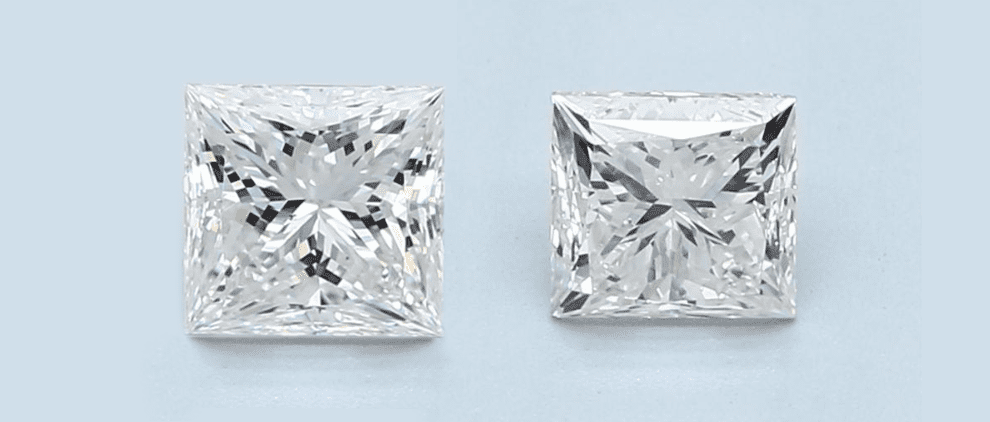Complete Guide to Lab Diamond Rings: Ethical, Affordable, and Brilliant Choices
Lab diamond rings have surged in popularity as ethical and affordable alternatives to traditional mined diamonds. In this comprehensive guide, we delve into what lab diamonds are, why they’re favored, how they compare to natural diamonds, and essential tips for purchasing the perfect lab diamond ring. Whether you’re a first-time buyer or considering a lab-grown diamond for ethical reasons, this article equips you with the knowledge needed to make an informed decision.
Table of Contents
Understanding Lab Diamonds
What are Lab Diamonds? Lab diamonds, also known as synthetic or cultured diamonds, are created in controlled laboratory environments rather than being mined from the earth. They replicate the natural diamond formation process but occur over a much shorter period, guides lab diamond rings, typically a few weeks. Chemically identical to natural diamonds, they possess the same physical properties and brilliance, making them indistinguishable to the naked eye.
How are Lab Diamonds Created? There are two primary methods for creating lab diamonds: High Pressure-High Temperature (HPHT) and Chemical Vapor Deposition (CVD). HPHT simulates the conditions found in the earth’s mantle to grow diamonds from a small diamond seed, while CVD involves depositing carbon atoms onto a substrate in a vacuum chamber. Both methods result in diamonds with identical chemical compositions to natural diamonds.
Comparison with Natural Diamonds While natural diamonds take millions of years to form under the earth’s crust, lab diamonds are produced within weeks under controlled conditions. They share the same physical and chemical characteristics as natural diamonds, including hardness and brilliance. The main distinction lies in their origin and the significantly shorter time required for their formation.
Advantages of Choosing Lab Diamond Rings
Cost Efficiency Lab diamonds typically cost 20-40% less than natural diamonds of similar quality. This affordability allows consumers to purchase larger or higher-quality diamonds within their budget, making them an attractive option for engagement rings and other fine jewelry pieces.
Ethical Considerations Sourced ethically and sustainably, lab diamonds are free from the environmental and ethical concerns associated with some mined diamonds. They are conflict-free and mined in compliance with strict labor and environmental regulations, appealing to conscientious consumers seeking socially responsible options.
Quality and Purity Lab diamonds undergo rigorous grading and certification processes similar to natural diamonds. Organizations like the Gemological Institute of America (GIA) provide certifications that verify the diamond’s quality based on the 4Cs: cut, color, clarity, and carat weight. This ensures transparency and helps buyers make informed decisions.
Factors to Consider When Buying Lab Diamond Rings
Cut, Color, Clarity, and Carat Weight (4Cs) The 4Cs are crucial factors to consider when purchasing a lab diamond ring. The cut determines the diamond’s sparkle and brilliance, while color grades range from colorless to faint yellow. Clarity assesses the presence of imperfections, and carat weight indicates the diamond’s size. Understanding these factors ensures you choose a diamond that meets your preferences and budget.
Setting and Design Options Lab diamond rings come in various settings and designs, from classic solitaires to intricate halo designs. Consumers can select metals like platinum, white gold, yellow gold, or rose gold to complement their chosen diamond. Customization options allow for personalized touches such as engravings or unique settings that reflect personal style and sentiment.
Durability and Maintenance Known for their durability, lab diamonds score a perfect 10 on the Mohs scale of mineral hardness. This hardness makes them highly resistant to scratching and suitable for everyday wear. To maintain their brilliance, regular cleaning with mild soap and water or professional cleaning by a jeweler is recommended. Proper care ensures the longevity and sparkle of your lab diamond ring.
Comparing Lab Diamonds vs. Natural Diamonds
Price Lab diamonds are generally more affordable than natural diamonds due to their controlled production process and abundant supply. This cost-effectiveness allows buyers to invest in larger or higher-quality diamonds without exceeding their budget, making lab diamonds an attractive choice for economically savvy consumers.
Aesthetics Visually, lab diamonds are virtually identical to natural diamonds, exhibiting the same brilliance, fire, and scintillation that make diamonds a symbol of luxury and romance. Whether set in a classic solitaire engagement ring or a modern pave band, lab diamonds offer timeless beauty and elegance.
Resale Value While natural diamonds have historically retained their value over time, lab diamonds are relatively new to the market. Factors such as market demand, certification, and the condition of the diamond can influence its resale price. Despite this variability, lab diamonds offer excellent value for money and continue to gain acceptance in the jewelry industry.
Popular Myths About Lab Diamonds
Myth #1: Lab Diamonds are Fake Contrary to popular belief, lab diamonds are not fake or imitation diamonds. They are genuine diamonds with the same crystal structure and chemical composition as natural diamonds, differing only in their origin.
Myth #2: Lab Diamonds Lack Brilliance Scientifically, lab diamonds exhibit the same optical properties as natural diamonds, including brilliance and sparkle. Their quality is determined by the same factors—cut, color, clarity, and carat weight—that apply to natural diamonds, ensuring exceptional beauty and fire.
Where to Buy Lab Diamond Rings
Online Retailers Reputable online retailers such as Brilliant Earth, James Allen, and Clean Origin offer a wide selection of lab diamond rings. These platforms provide detailed product information, customer reviews, and certification details to facilitate informed purchasing decisions from the comfort of your home.
Physical Stores Many jewelry stores and boutiques now carry lab diamond rings alongside traditional diamond collections. Visiting a physical store allows customers to examine different designs, try on rings, and receive personalized assistance from knowledgeable staff members, ensuring a seamless shopping experience.
Conclusion
Lab diamond rings offer a compelling choice for consumers seeking ethical, affordable, and high-quality diamonds. With their sustainable sourcing, comparable brilliance to natural diamonds, and customization options, lab diamonds continue to redefine the jewelry market. Whether you’re drawn to their environmental benefits or their budget-friendly pricing, choosing a lab diamond ring ensures both style and conscience align beautifully.
